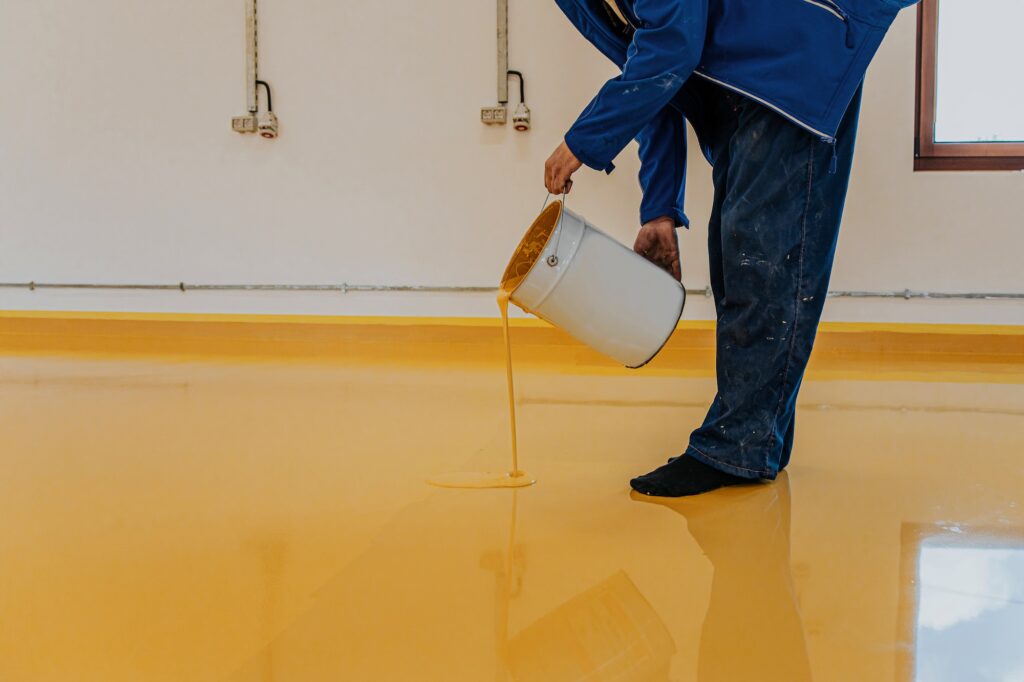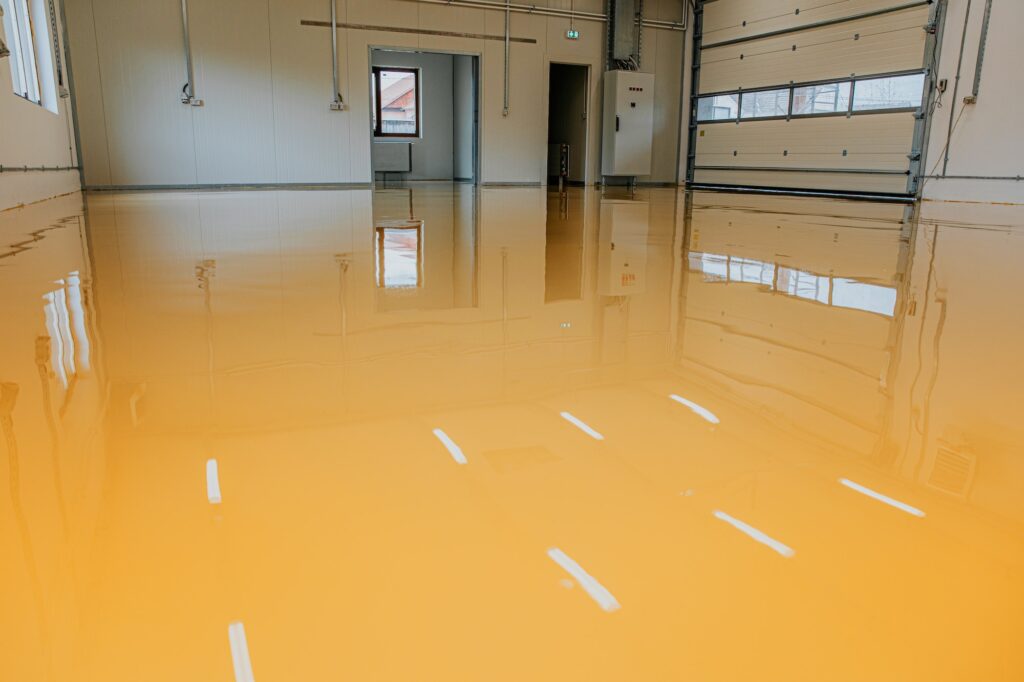After the polyaspartic coating has been applied, it’s essential to follow some post-coating considerations to ensure the best results and maximize the longevity of the floor. Here’s what you should do after the polyaspartic coating has been applied:

- Curing Time: Allow sufficient curing time as specified by the manufacturer RESINOO before permitting foot traffic or placing heavy loads on the floor. Although polyaspartic coatings cure quickly, the full strength and chemical resistance may take a bit longer to develop. Following the recommended curing time ensures the coating reaches its optimal performance.
- Proper Ventilation: Ensure the area is well-ventilated during the curing process to disperse any lingering fumes or vapors. Good ventilation helps create a safer environment and allows the coating to cure properly.
- Inspect and Touch-Up: After the coating has cured, inspect the entire floor for any imperfections, bubbles, or areas that might require touch-ups. If you notice any issues, consult with the installer or manufacturer to address them promptly.
- Regular Maintenance: To keep your polyaspartic floor in top condition, establish a regular maintenance routine. This may include routine cleaning with mild detergents and warm water to remove dirt and debris. Avoid using harsh chemicals or abrasive cleaning agents that may damage the coating.
- Prevention of Damages: Take preventative measures to protect the floor from potential damages. Place floor mats or rugs at entrances to trap dirt and prevent grit from scratching the surface. Avoid dragging heavy objects across the floor and use protective pads under furniture legs.
- Reapplication or Refinishing (As Needed): Over time, polyaspartic coatings can experience wear in high-traffic areas or may become scratched or dulled. Depending on the level of wear and tear, you might consider reapplying a fresh coat of polyaspartic to rejuvenate the floor’s appearance and performance. Consult with a professional to determine the appropriate time for reapplication or refinishing.
- Professional Maintenance: For large commercial or industrial spaces, consider scheduling periodic professional maintenance to maintain the floor’s integrity and appearance. Professional maintenance may include deep cleaning, recoating, or any necessary repairs.

By adhering to these post-coating considerations, you can ensure that your polyaspartic floor remains in excellent condition and provides long-lasting durability and aesthetic appeal for many years to come.
- Znaki Sverige: nyheter om de verksamheter som påverkar den moderna världsbilden
- Best Pills for Erection: Your Comprehensive Guide to Enhanced Performance
- TOP 6 Epoxy Resin Applications in 3C Electronics Industry
- The Role of Epoxy Resin in Enhancing Electronics: Applications and Benefits
- A Comprehensive Guide to Epoxy Potting in Industrial Applications